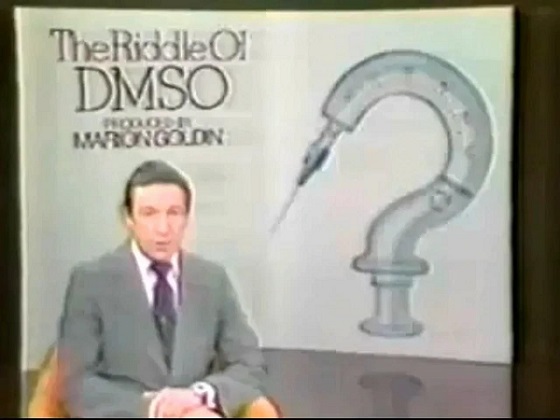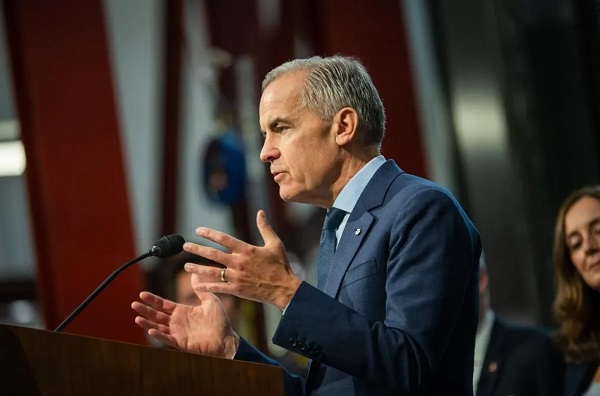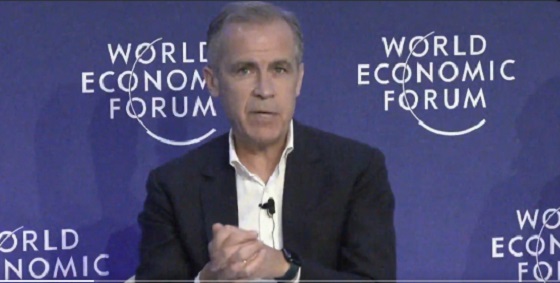Crime
First Minneapolis shooting victim identified as 8-year-old Fletcher Merkel

Quick Hit:
One of the young victims of Wednesday’s mass shooting at a Minneapolis Catholic school has been identified as 8-year-old Fletcher Merkel. His grieving father denounced the gunman as a “coward” who took his son’s life during a back-to-school Mass at Annunciation Church.
Key Details:
- Fletcher Merkel, 8, and another 10-year-old child were killed when 22-year-old Robert “Robin” Westman opened fire through the church’s stained glass windows during Mass on Wednesday. Fletcher’s father, Jessie Merkel, said his son loved fishing, cooking, sports, and time with family.
- Nearly 20 others—most of them children ages 6 to 15—were injured in the attack. Nine remained hospitalized Thursday, including one child in critical condition, according to Hennepin County Medical Center. Survivors described hiding under pews, rushing to the basement, or shielding themselves beneath classmates as Westman fired 116 rounds before turning the gun on himself.
- Authorities revealed Westman had posted disturbing videos online and filled a manifesto with hate-filled rants and plans for the shooting. Pages detailed his desire to target “a large group of kids” at the church.
WATCH: Father of 8-year-old Fletcher Merkel, killed in Minneapolis school shooting, gives statement. 💔🙏
"Please remember Fletcher for person he was, not act that ended his life."
"Give your kids an extra hug & kiss today. We love you, Fletcher. You'll always be with us." pic.twitter.com/R4GKQhNbCD
— Breaking911 (@Breaking911) August 28, 2025
Diving Deeper:
The Minneapolis community is mourning after authorities confirmed Thursday that 8-year-old Fletcher Merkel was among those killed in a horrifying mass shooting at Annunciation Catholic Church and School. Fletcher and another 10-year-old student were gunned down as they sat in pews during a morning Mass, when Robert “Robin” Westman, a 22-year-old transgender-identifying male, opened fire through stained-glass windows.
At a press conference, Fletcher’s father, Jessie Merkel, spoke through grief and anger, describing his son as a boy who “loved his family, friends, fishing, cooking, and any sports that he was allowed to play.” He called Westman a “coward,” adding, “While the hole in our hearts and lives will never be filled, I hope that in time, our family can find healing.” Merkel also expressed gratitude to the students and staff whose “swift and heroic actions” helped prevent an even greater tragedy.
In total, nearly 20 people were wounded in the attack—most of them children between the ages of 6 and 15. Hospital officials said nine victims remained in care as of Thursday afternoon, including one child in critical condition. Among the wounded was 12-year-old Sophia Forchas, whose mother was working a shift at Hennepin County Medical Center when victims began arriving. Another survivor, 13-year-old Endre Gunter, reportedly asked a doctor to “pray with [him]” before surgery.
Students who made it out described chilling silence as the shooter sprayed bullets—116 rounds in total. Many said there was no screaming, only the sound of gunfire, before they scrambled to hide in pews, basements, or under one another’s bodies.
Police Chief Brian O’Hara said investigators recovered Westman’s journals and online posts that revealed months of planning. In his writings, Westman expressed hatred “towards almost every group imaginable,” including Jews, people of color, and even children. His manifesto included detailed notes about attacking the Annunciation campus, noting the church as an “easy attack form and devastating tragedy.”
Authorities are still searching for a clear motive, though the manifesto makes clear the gunman envisioned a large-scale massacre. Chief O’Hara called the writings “repugnant” and confirmed they included early drafts of the shooting plan.
As Minneapolis reels, Fletcher Merkel’s father’s words echo: a child full of life and love was taken by senseless violence. The community now faces the difficult road of mourning and healing while demanding answers about how such evil came to their church’s doorstep.
Alberta
Coutts border officers seize 77 KG of cocaine in commercial truck entering Canada – Street value of $7 Million

News release from RCMP Federal Policing Northwest Region
Calgary resident charged with attempted drug importation
Canada Border Services Agency (CBSA) officers at the Coutts port of entry found nearly 77 kg of cocaine with an estimated street value of $7 million during a secondary examination of a commercial truck seeking entry into Canada from the United States. The CBSA arrested the driver, a resident of Calgary.
The Integrated Border Enforcement Team in Alberta, a joint force operation between the RCMP Federal Policing Northwest Region, CBSA and Calgary Police Service, was notified and a criminal investigation was initiated into the individual.
Surj Singh Salaria (28), a resident of Calgary, was arrested and charged with:
- Importation of a controlled substance contrary to section 6(1) of the Controlled Drugs and Substances Act;
- Possession of a controlled substance for the purpose of trafficking contrary to section 5(2) of the Controlled Drugs and Substances Act; and,
- Attempting to export goods that are prohibited, controlled or regulated contrary to section 160 of the Customs Act.
Salaria is scheduled to appear in Lethbridge Provincial Court on Oct. 27, 2025.
“The CBSA remains vigilant in preventing dangerous drugs from reaching our communities. This significant seizure shows CBSA’s detection capabilities and the important role our officers play to stop drug trafficking. We are committed to securing and protecting the border alongside our law enforcement partners.”
- Janalee Bell-Boychuk, Regional Director General, Prairie Region, Canada Border Services Agency
“Through coordinated efforts between law enforcement agencies, a substantial quantity of cocaine was seized before it could reach communities across Alberta. This investigation reinforces the value of a secure border and the vital role that collaboration and intelligence-sharing play in safeguarding the public from the harms of illegal drug trafficking.”
- Supt. Sean Boser, Officer in Charge of Federal Serious and Organized Crime and Border Integrity – Alberta, RCMP Federal Policing Northwest Region
“This investigation highlights the strength of our collaborative efforts through the Integrated Border Enforcement Team. By working together with our law enforcement partners, we are able to disrupt the flow of illegal drugs and protect our communities from the violence and harm associated with organized crime.”
- Acting Supt. Jeff Pennoyer, CPS, Criminal Operations & Intelligence Division
IBET’s mandate is to enhance border integrity and security along the shared border, between designated ports of entry, by identifying, investigating and interdicting persons, organizations and goods that are involved in criminal activities.
Crime
RCMP Bust Industrial-Scale Superlab Outside Toronto

A months-long RCMP investigation has led to the takedown of a massive synthetic-drug operation resembling the “super labs” often found in British Columbia — but this one was discovered just forty-five minutes north of Toronto. Officers uncovered an industrial-scale facility capable of producing millions of dollars’ worth of fentanyl, methamphetamine, MDMA, and GHB.
The RCMP’s Ontario Federal Policing unit announced Friday that search warrants executed on September 7 in Schomberg, northwest of Toronto, resulted in the seizure of nearly $10 million in suspected controlled substances, along with prohibited weapons, chemical precursors, and a range of illegal production equipment.
In addition to cash, drugs, and chemicals, officers discovered a pill press, firearms, handwritten drug “recipes,” flasks, chemical glassware, and other lab components. Approximately 20,000 litres of hazardous waste were also removed from the site.
Investigators say the probe began in spring 2025, when officers detected a suspicious bulk-chemical order placed by Christopher O’Quinn, operating under the business name O’Quinn Industries. “The chemicals ordered are known to police to be used in the production of fentanyl, MDMA, methamphetamine, and for cannabis extraction,” the RCMP said.
After weeks of surveillance, RCMP officers uncovered what they describe as a large-scale clandestine lab hidden on a Schomberg property. Dismantling the facility required coordination with the Ontario Fire Marshal, Health Canada, and municipal emergency services — a hazardous-materials operation that lasted ten days.
Three suspects — O’Quinn, Liang Xiong Guo, and Katie King — were arrested and face a combined 33 criminal charges.
O’Quinn faces 20 offences, including production and trafficking of Schedule I substances, possession of precursor chemicals, and multiple weapons violations involving a bullpup-style shotgun and a .22-calibre rifle.
Guo faces nine counts linked to the production and trafficking of methamphetamine and MDMA.
King faces four counts related to meth trafficking and illegal firearm possession.
RCMP officials said additional substances are undergoing Health Canada testing to determine whether synthetic opioids such as fentanyl were present.
Authorities also seized $8,000 in cash, multiple firearms, laboratory glassware, and chemicals capable of producing further drug batches valued in the millions.
“The complexity and danger of the operation required extensive inter-agency collaboration,” the RCMP said, thanking partners including the Ontario Provincial Police, Niagara Regional Police, York Regional Police, South Simcoe Police, the Ontario Fire Marshal, Health Canada, the Ministry of the Environment, and the Canada Border Services Agency.
Health Canada testing and court proceedings are ongoing.
-

 Energy2 days ago
Energy2 days agoCAPP calls on federal government to reset energy policy before it’s too late
-

 Business2 days ago
Business2 days agoTrump Raises US Tariffs on Canadian Products by 10% after Doug Ford’s $75,000,000 Ad Campaign
-

 Business2 days ago
Business2 days agoTrans Mountain executive says it’s time to fix the system, expand access, and think like a nation builder
-

 Business2 days ago
Business2 days agoCanada is still paying the price for Trudeau’s fiscal delusions
-

 Health2 days ago
Health2 days agoDMSO Heals the Eyes and Transforms Ophthalmology
-

 Media2 days ago
Media2 days agoCarney speech highlights how easily newsrooms are played by politicians announcing the same things over and over again
-

 Opinion2 days ago
Opinion2 days agoCarry-On Carney And The Trials Of Brian Peckford
-

 Opinion2 days ago
Opinion2 days agoA Nation of Announcements: Canada’s Government of Empty Promises












